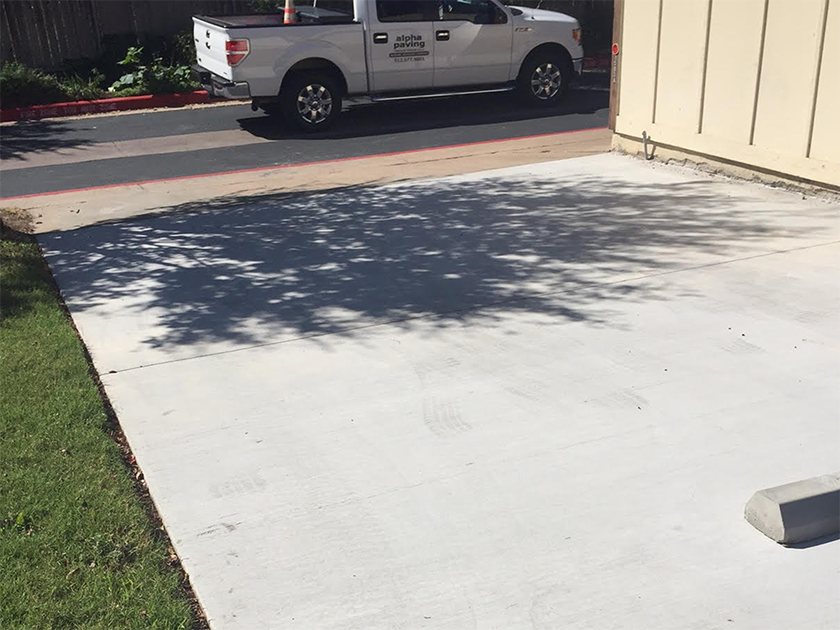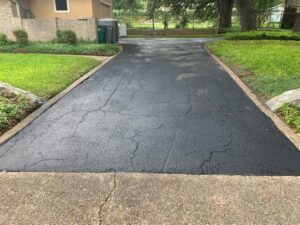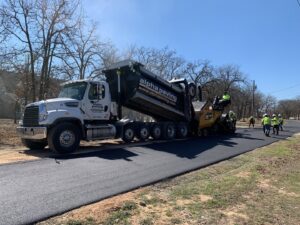 The basic definition of a trip hazard is an unexpected change in elevation between two otherwise level planes. According to the Americans with Disabilities Act, property owners should correct vertical changes equal to or greater than a quarter of an inch at concrete cracks or joints. Although this may seem like an insignificant change in elevation, studies have shown that most pedestrians spend more time looking ahead than looking down at their feet, so they are less likely to identify a minor vertical change until it is too late. Furthermore, even minor vertical changes can present significant challenges to people with mobility issues, including those who rely on wheelchairs or scooters to get around. Professional concrete repair can help you ensure that your parking lots, sidewalks, and other pavements do not pose a danger to the people using them.
The basic definition of a trip hazard is an unexpected change in elevation between two otherwise level planes. According to the Americans with Disabilities Act, property owners should correct vertical changes equal to or greater than a quarter of an inch at concrete cracks or joints. Although this may seem like an insignificant change in elevation, studies have shown that most pedestrians spend more time looking ahead than looking down at their feet, so they are less likely to identify a minor vertical change until it is too late. Furthermore, even minor vertical changes can present significant challenges to people with mobility issues, including those who rely on wheelchairs or scooters to get around. Professional concrete repair can help you ensure that your parking lots, sidewalks, and other pavements do not pose a danger to the people using them.
What Is a Concrete Trip Hazard?
What Causes Concrete Trip Hazards?
When concrete companies install a pavement correctly, natural forces are typically the cause of trip hazards. Tree roots can exert pressure on the side of the pavement, resulting in cracks or horizontal displacement of the concrete slab, or they can exert pressure from beneath the slab, resulting in an uplift. Concrete trip hazards can also result from changes in the underlying soil, including underground erosion, repeated freezing, and thawing of the ground, settling soil, or the cycle between wet and dry conditions of a concrete foundation with a high level of clay in the soil. Sometimes, pavement abuse can lead to tripping hazards. Driving a car on a pedestrian walkway, for example, can break or crack the concrete. Broken corners or major cracks are tripping hazards in themselves, but they can also trap water, allow the separated areas to shift with greater ease, or leave behind chunks of debris that increase the risks.
How Do Concrete Contractors Repair Tripping Hazards?
Concrete contractors can employ several methods to repair pavement. However, the best, longest-lasting method is to have a reliable concrete installer remove the existing pavement, determine and correct the problem’s cause, and install new concrete. The second-best method is a procedure known as mud jacking or slab jacking. The contractor will drill holes in the pavement to insert foam or slurry to level the slabs. Although the process is less expensive than removing and replacing the pavement, it does not typically resolve the underlying problem so that the issue may return. Other solutions include horizontal cutting and concrete grinding, both of which are temporary fixes that do not address the problem’s cause. Depending on the situation, it may not be possible to use horizontal cutting or concrete grinding without sacrificing your ADA compliance.
Trust Your Concrete Work to Alpha Paving
Alpha Paving is a full-service, highly esteemed, and award-winning paving and concrete company with its home office in Round Rock. Our paving services include concrete installation, asphalt paving, concrete repair, asphalt crack repair, thermoplastic pavement markings, pothole repair, road construction, parking lot striping, street maintenance, sealcoating, and traffic sign installation. We serve shopping malls, hotels, health care facilities, religious institutions, municipalities and counties, industrial facilities, schools, apartment complexes, airports, restaurants, office parks, and other commercial clients throughout Central Texas. We earned our impeccable reputation by providing exceptional work, professional project management, and superior customer service with consistency and integrity. To request a free pavement assessment and quote, you can use the online form, or you can call 512-677-9001.






